Preparing for the Pacific Ocean
Published on October 22nd, 2015
Sailing to Hawaii from the west coast of the USA is a bucket list must-do for many racers and cruisers. But for first-timers, the planning and preparation for a Pacific crossing are daunting tasks.
While the digital age has made the voyage to Hawaii safer than ever, novice adventurers face new hurdles: ever-changing safety requirements, choosing between multiple navigation and communications options, and busy work and home lives. Additionally, some ocean races cater predominately to high-end professional programs and require all yachts to have an Offshore Racing Rule (ORR) rating, an expensive proposition for smaller boats and more casual racing programs.
Seeking to provide a solution, the biennial Pacific Cup race was started in 1980, offering a 2070 nm course from the starkly beautiful coastline of San Francisco, California to the lush, tropical paradise of Kaneohe, Hawaii. The intent was to welcome not only those sleek sleds with pro teams, but also racers with limited ocean experience, smaller boats (24+ foot), double-handers, families, and even now cruisers (a new division started in 2014).
Moreover, the Pacific Cup Yacht Club (PCYC) has developed a remarkable set of resources to support participants throughout the planning and preparation process. With over 50 boats already signed up for the 2016 Pacific Cup (out of a maximum of 70), the PCYC team is already working diligently to keep information and resources updated while developing new training opportunities.
Two racers who have benefited from PCYC’s efforts are three-time Pacific Cup veterans Mark English and Ian Rogers. For the past ten years this pair has successfully campaigned English’s Moore 24, Mas!, which they’ll be racing in the double-handed division of the 2016 Pacific Cup for the first time. Both men are busy new fathers. English has twin one-year old boys, and Richards has a one-year old daughter and another baby due in March.
“I think being a new father is the best training one can have for the Pacific Cup. I’ve learned that you really only need a few hours of sleep to function,” quips Rogers. English adds, “No matter how you do it, it’s a commitment that involves sacrifice in other parts of your life. I’m very lucky to have a supportive wife — without her this wouldn’t be possible.”
Team Mas! decided early on that planning was priority number one. “We’ve had help from many different people, on more different fronts than I can count. Our basic premise has been to start early and use every resource at our disposal,” says English.
The duo recently completed a major refit of Mas! with the help of local experts like Scott Easom (Easom Rigging), Gilles Combrisson (GC Rigging and Composites), Ashley Perrin (Racing Yacht Management) and Peter King (electronics guru).
“We did most of the grunt work but there are times when you just don’t have the skills to complete some or all of a project and having professionals like Scott or Gilles finish a project is the best way to go,” says Rogers. “We can’t speak highly enough about these guys, and Giles’ experience double-handing the Moore 24 Snafu in the 2014 race with owner Karl Robrock has provided some terrific insights.”
“One of the things the Pacific Cup exemplifies to the 1000th degree, is the drive to help others succeed,” says English. “When we hit the starting line everyone is taking no quarter and pushing themselves and their boats. But in terms of providing encouragement and support, and time — the most important resource we all have — everyone is super helpful about every facet of the race.
“Going back to our strategy of not wanting the lead up to the Pacific Cup turning into a crush of stress and preparation, the support system reduces a lot of that pressure, and actually can make it fun. Ian and I have been around sailing for most of our lives, and we’ve already met a lot of new folks, and we’re still 10 months from the start.”
All their work has paid off. Mas! was the first boat to pass the inspection for the race — 11 months before the first start. “Everything takes three times longer to do than you think it should,” says English. “Having the Pacific Cup network to draw on is a huge bonus, particularly for those of us who are doing this as a hobby and not professionally.
A key component of PCYC’s support strategy is the series of Pacific Offshore Academy seminars, sponsored by Alaska Airlines and featuring respected experts from the sailing community. The agenda for the first 2016 race seminar, held in June featured presentations on several important aspects of preparation: rigging considerations, navigation and communications, hull and rudder integrity, and the required equipment list.
Eric Steinberg (Farallon Electronics) recapped some questions he received at the seminar. “Racers want to know what kind of connectivity speeds they can get and how much data they can download and upload too. Often, individuals expect to have broadband connectivity, much like they have at home, but there’s is a big difference between what you get at home and what you should expect to get at sea.”
Steinberg strongly recommends not waiting until the last minute to start using new navigation and communications equipment. “If you have it installed today, you’ll have all next spring to practice with it and get to know the most effective ways to use it. Budgets are important, but having the ability to capably recharge a boat’s batteries so that the electronics equipment can actually be used is essential.”
A common theme from all the presenters was the need to start preparations as far in advance as possible, and pay attention to the details. This theme is not likely to change during the second Alaska Airlines Pacific Offshore Academy, to be held on October 17 at Richmond Yacht Club. The agenda includes a panel of sailmakers, Skip and Jodi McCormack speaking on boat optimization, Michael Morgan discussing electrical systems, Mike Pasha from Pasha Hawaii addressing how to ship your boat home from Hawaii, and chief inspector Michelle Farabaugh discussing the inspection process.
Seminar participants will have an opportunity to ask questions during the breakout sessions and Buzz Blackett’s California Condor and Mark English’s Mas! will be at the dock for tours. Previous competitors have often commented that getting to know the other sailors before the race makes communications during and after the race much more fun, and this is an ideal opportunity make those connections.
The 2016 Pacific Cup’s starts run from July 11 through July 15. Days of fantastic downwind sailing, phenomenal sunrises and sunsets, the first sight of Oahu in the distance and, of course the spectacular finish at the ever-welcoming Kaneohe Yacht Club, make all the preparation worthwhile.
Details: www.pacificcup.org.
Report by Ross Tibbits for Pacific Cup Yacht Club


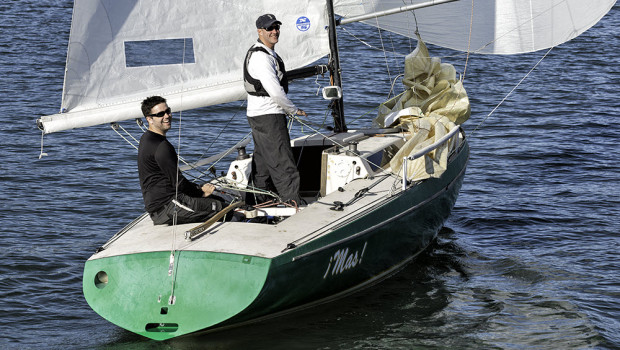

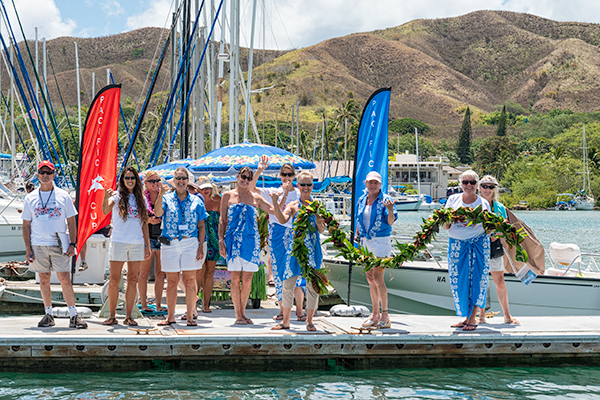

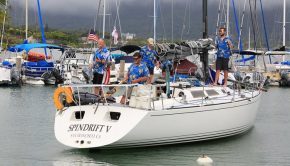
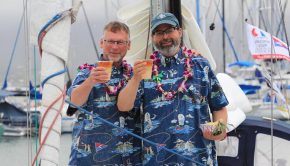

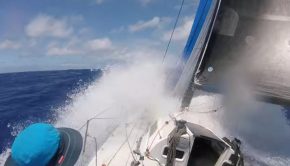
 We’ll keep your information safe.
We’ll keep your information safe.